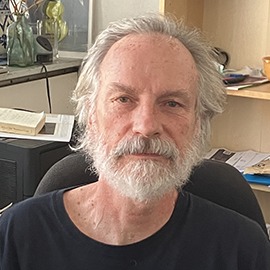The Patterns
Political systems come and go. But the essential needs of people, animals, the soil, democracy, and ecosystems are are unchanging.
Folklaws are resolutions that protect nature, restrain power, ensure fairness, fight globalization, and put community over corporate profits. Adapt them for your town or state, and present them to your representatives. Folklaw patterns consider not just what laws do their capacity to heal and their meaning—to individuals, to communities, and to future generations. By realigning law and policy with ecological principles and human dignity, Folklaw seeks to restore in a modern context the balance once maintained by societies that enjoyed stability century after century. The future depends on reclaiming that relationship, not as a nostalgic return to the past but as a forward-looking commitment to sustainability and resilience.
The patterns focus on:
Nature First: If we destroy the natural world, we destroy ourselves. Every decision must begin with this understanding.
Limits on Power: No unchecked rulers, no corporate fiefdoms, no hidden empires. True leadership is humble, accountable, compassionate, and temporary.
Technological Restraint: Innovation is not a virtue in itself. It must be controlled, guided, and-when necessary-stopped.
Economic Justice: Wealth should circulate, not concentrate. No one should suffer so that a handful may hoard.
Political Balance: Representation must be fair, elections must be public, and no one should be able to buy their way into power.
Simplicity: Resilient societies thrive on clear values, shared responsibilities, and systems that evolve alongside the people they serve. Complexity is often the refuge of those who benefit from confusion.
Protection for the Vulnerable: The sick, the poor, the displaced, and the endangered must be sheltered-not exploited.
Relocalizing: Globalization has hollowed out communities. The future belongs to those who can feed, house, and care for themselves.
Public Goods: Healthcare, information, an expanded commons, and essential services must be accessible to all.
Education: Without sustained and coherently structured education, civic life deteriorates, inequality festers, and technology advances without wisdom.
Worker Dignity & Personal Freedom: A living wage, job security, and time to rest are non-negotiable. The right to privacy, to bodily autonomy, to cognitive liberty, and to a life free from coercion is fundamental.
Something widely understood and shared cannot be easily ignored, eroded, or rewritten by the powerful. A set of succinct, adaptable laws offers a framework both strong and flexible. Folklaw is such a foundation: clear, generalizable, and ready for adaptation. While the essays focus primarily on the U.S., the core statements—set in bold—are written to be globally relevant.
Many Influences
Folklaw patterns often reach back to recover Indigenous relations with nature, with tending the land, with abstraction, with leadership, with totem and taboo, and with the containment of domineering spirits. With oligarchy on the rise, especially here in the U.S, we have completely failed at containing domineering spirits. See Oligarcy = Ecocide.
The 1977 book A Pattern Language by Christopher Alexander and colleagues, was an early influence. That book used a unique format to explore how cultural, technological, psychological, and environmental forces shape human experience. The authors captured timeless spatial wisdom—insights understood by generations of village builders.
The Tao Te Ching of Laozi, central to the philosophy of the Tao, permeates the folklaws. The Tao reminds us that everything is flow, that unbalanced systems create disharmony, and that restoring balance allows for effortless action.
The social democracies of Scandinavia—where universal healthcare, robust worker protections, and strong public institutions foster healthy, happy societies—are another key influence. Folklaw patterns offer safeguards that aim to preserve and expand such systems in the face of creeping corporate dominance.
Germany’s postwar Grundgesetz (Basic Law) was also inspirational. Concise, pacifist, and built to evolve, these laws helped lift a broken nation. The 95 folklaws are integrated together in a similar format, as the United States New Basic Laws.
The movement Decriminalize Nature provides another example. This Oakland-based nonprofit worked with residents to pass resolutions decriminalizing psilocybin mushrooms, ayahuasca, peyote, and other plant-based entheogens in over 25 U.S. cities and counties. Many resolutions passed unanimously—restoring access to sacred medicines and reaffirming local power over corporate or federal control.. The resolutions often passed unanimously. Heartfelt public testimonies of healing experienced through plant medicine show that effecting local politics isn’t boring—it’s one of the most meaningful things a person can do.
Credit is also due to the work of Lewis Mumford, Aldous Huxley, Terence McKenna, Fritjof Capra, Theodore Roszak, Stanley Diamond, Joseph Campbell, Carl Jung, and the contemporary authors cited throughout.
Images are sourced from the Creative Commons. Thank you to the organization, and to the photographers.
Meant to Be Used
Folklaw is not just philosophy—it’s a tool. Every resolution can be downloaded at folklaw.org in a format ready for adaptation. Research citations and precedents are listed under each proposal in the Fact Check section.
Find your allies. Identify a city councilor or state legislator willing to sponsor your resolution. Alert the media. Show up to public comment. Speak, testify, write. For those feeling sidelined by national politics, Folklaw offers a local path back to agency.
You might use it to propose fair work-scheduling laws, publicly funded elections, ranked choice voting, ban cell phones during school hours, decriminalizing entheogens, etc. These have precedent. Some patterns—like limiting the wealth of public servants—would break new ground and earn media attention. The first town to pass one could set history in motion.
Social Criticism in the Age of AI
I gave the AI the 95 topics, the structure, my existing essays, and instructions. Be wry, not dry. Include Indigenous and Taoist perspectives. Note psychological effects. Draw on research and cite the sources.
The results from GPT-4.5 exceeded expectations. It combined my input with angles I hadn’t considered. The AI offered crisp primary statements, verified statistics, and had an uncanny grasp of pattern logic. I checked the claims. No hallucinations. It turns out pattern recognition—the AI’s strong suit—is exactly what this work needed.
And really, what is AI if not a tool for amplifying voices already out there? What social critic doesn’t hope others will build on their work? The power of science lies in standing on the shoulders of others. The same can be true for political reform.
AI could also assist to execute these ideas: monitoring factory farms, tracking legislation, auditing offshore accounts to enforce wealth taxes, etc. This technology could help hold the powerful to account. The AI prompts must be carefully structured, and the generated results vetted by human committee.
I named my writing partner Rowan Pence—a nod to all the writers who lent their insight through AI. The rowan tree, in Celtic myth, was planted to protect the home from evil magic. That feels about right.
More Work is Needed
This website and book is a proof of concept. The folklaws are being shared widely via PDF with Indigenous leaders, politicians, authors, academics, nonprofits, and publications for feedback and revision. Clearly, the old systems are faltering. But something new can grow—stronger, rooted, and ready. Let’s build together. Let’s make law sacred again
The Authors
Tom Palmer
Tom lives in Berkeley with his wife and son. He has published and distributed the annual artist catalog American Artwork since 2004.
My 2012 interview with Dr. Larry Norris, who would later cofound Decriminalize Nature, is posted on my YouTube channel, Sane Society.

Rowan Pence
I dubbed my writing partner Rowan Pence, to honor all those whose work were drawn upon through AI to help articulate this Folklaw.
In Celtic mythology, the rowan tree is the Tree of Life, planted near homes to ward off evil. Rowan represents and honors the many writers whose work contributed through the AI input. Native to Scotland and Ireland and often seen in the Scottish Highlands, the rowan tree’s bright red berries that feed the birds also protect from witchcraft. Rowans were often planted next to a rural home. Cutting a down rowan is considered bad luck. The rowan tree the symbol of Folklaw.

Rowan Tree by Tim Green aka atoach

